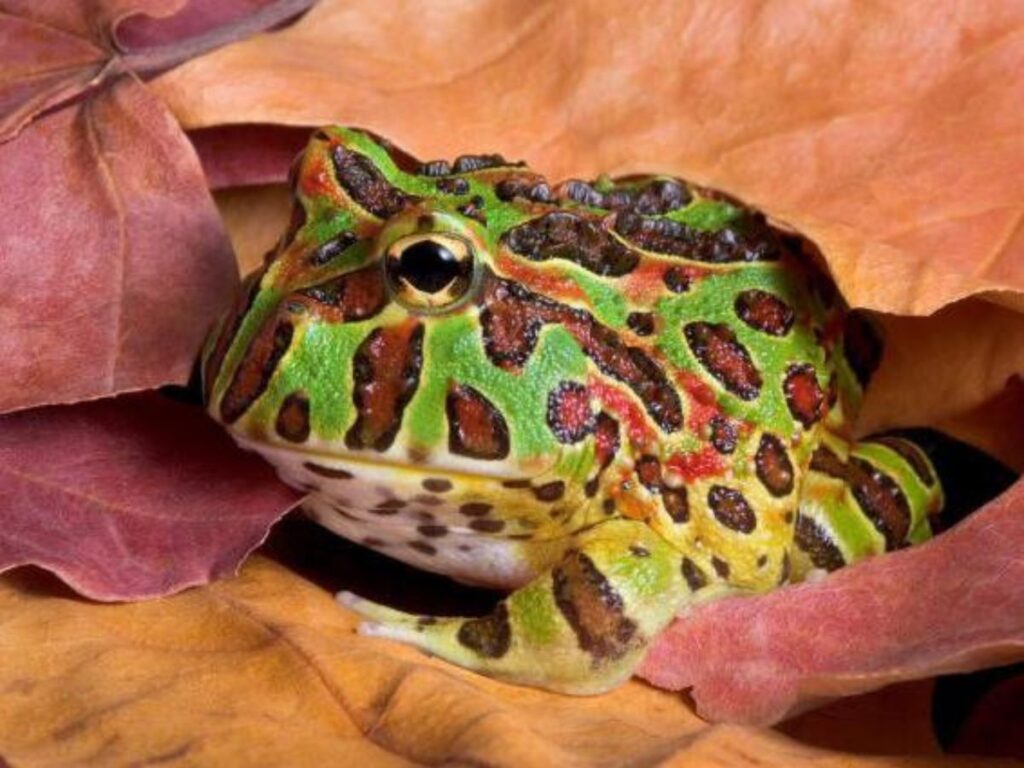🐸 Pacman Frog Feeding Myths Busted
Separating Fact from Fiction for a Healthier Frog
Pacman Frog Feeding Myths Busted - At a Glance
Pacman frogs don’t need to eat every day, can live without pinky mice, and shouldn’t be overfed. From live prey misconceptions to supplement confusion, this article debunks popular feeding myths and provides science-based guidance for keeping your frog healthy and happy.
Feeding your Pacman frog sounds simple—toss in a bug and watch the ambush. But with misinformation running wild online and in pet stores, many frog owners are unknowingly making critical feeding mistakes. This guide breaks down common myths and sets the record straight on what your Pacman frog really needs.
In this article, you’ll learn:
The truth about feeding frequency
Whether pinky mice are required
If frogs need live prey to eat
The right way to use supplements
Why a “bigger meal” isn’t always better

Myth #1: Pacman Frogs Need to Eat Every Day
False.
While juvenile frogs need frequent feeding (daily or every other day), adults should only be fed 2–3 times a week. Overfeeding leads to:
Obesity
Fatty liver disease
Lethargy
Shortened lifespan
In nature, Pacman frogs often go days without eating between meals.
👉 How Often Should You Feed a Pacman Frog?
👉 Pacman Frog Feeding Schedule by Age
Myth #2: You Must Feed Pinky Mice
False.
While pinky mice can be offered occasionally to adults, they are not required. In fact, too many mice can cause:
Nutritional imbalance (too much fat)
Constipation or impaction
Reduced appetite for insects
Instead, focus on a varied insect-based diet:
Crickets
Dubia roaches
Earthworms
Silkworms
👉 What Do Pacman Frogs Eat? Complete Feeding Guide
👉 Can Pacman Frogs Eat Pinky Mice? Feeding Tips

Myth #3: Only Live Prey Works
Mostly false.
Pacman frogs are stimulated by movement, so live prey is best—but many will accept pre-killed or tong-fed food with some training. This can be safer for:
Preventing injury from biting crickets
Controlling mealtime and intake
Transitioning to freeze-dried or gel diets
Always use feeding tongs to protect your fingers from an accidental chomp.
👉 Pacman Frog Feeding Tongs: Tips for Safe Feeding
Myth #4: Calcium Powder Isn’t Necessary
False.
Pacman frogs in captivity don’t get UVB light or natural prey diversity, so they require calcium and vitamin supplements to prevent:
Metabolic bone disease (MBD)
Deformities in juveniles
Weakness or paralysis
Supplement Tips:
Use calcium with D3 once or twice a week
Use a multivitamin once per week
Lightly dust prey—don’t coat it heavily
👉 Do Pacman Frogs Need UVB Light?
Myth #5: Bigger Meals Are Better
False.
Feeding large prey too often can cause:
Choking
Impaction
Obesity
Follow the “no bigger than the space between their eyes” rule for prey size. Smaller, frequent meals are better than giant ones spaced too far apart.
Myth #6: Frogs Can Eat in the Main Tank
Not always ideal.
Feeding in the main enclosure can lead to:
Substrate ingestion (impaction risk)
Mold growth from uneaten food
Stress from food crawling into hiding areas
Many owners use a separate feeding container—especially for messy eaters.
👉 Pacman Frog Feeding Enclosure: Do You Need One?
Myth #7: Frogs Will Stop Eating When Full
Not true for Pacman frogs!
These frogs have voracious appetites and will eat until they’re sick. In the wild, they store fat to survive dry seasons—but in captivity, that instinct leads to overfeeding.
YOU must control how much and how often they eat.
Final Thoughts
Feeding your Pacman frog isn’t just about tossing in bugs—it’s about understanding their biology and avoiding common myths. With a balanced, supplement-supported diet and a proper feeding schedule, you’ll raise a healthy, happy frog that thrives for years.
FAQ: Pacman Frog Feeding Misconceptions
Q: Can I skip supplements if I gut-load my insects?
A: No. Gut-loading helps but doesn’t replace the need for calcium and multivitamin dusting.
Q: Are mealworms good feeders?
A: Only occasionally. Their tough exoskeleton can cause impaction.
Q: Is it OK if my frog doesn’t eat for a few days?
A: Yes, especially adults. Check temps and humidity, but fasting for 2–5 days can be normal.
